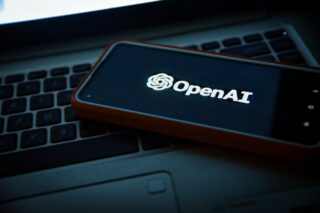Korean Language Facts and History
Korean is spoken by more than 72 million people living on the Korean peninsula. Although it differs slightly in spelling, alphabet, and vocabulary between the two regions, Korean is the official language of both South Korea and North Korea. Outside of the Korean peninsula, there are about two million people in China who speak Korean as their first language, another two million in the United States, 700,000 in Japan, and 500,000 in the Russian regions of Kazakhstan and Uzbekistan.
The Korean language has five major dialects in South Korea and one in North Korea. Despite the geographical and socio-political dialect differences, Korean is relatively homogeneous, being mutually understandable among speakers from different areas
Originally written using “Hanja” (Chinese characters), Korean is now mainly spelled in “Hangul”, the Korean alphabet. “Hangul” consists of 24 letters – 14 consonants and 10 vowels – that are written in blocks of 2 to 5 characters. Unlike the Chinese writing system (including Japanese “Kanji”), “Hangul” is not an ideographic system. The shapes of the individual “Hangul” letters were designed to model the physical morphology of the tongue, palate and teeth. Up to five letters join to form a syllabic unit.
Like in other Asian languages, the relationship between a speaker or writer and his or her subject and audience is paramount in Korean, and the grammar reflects this. The relationship between the speaker/writer and subject is reflected in honorifics, while that between speaker/writer and audience is reflected in speech level. If one is unsure as to how to use the language appropriately it is advisable to refer to professional Korean language services.
When talking about someone superior in status, a speaker or writer has to use special nouns or verb endings to indicate the subject’s superiority. Generally, someone is superior in status if he/she is an older distant relative (grandparent’s sibling, older sibling’s spouse, etc.), a stranger of roughly equal or greater age, an employer, teacher or a customer.
Someone is equal or inferior in status if he/she is a close relative (grandparent, parent, spouse, or sibling), student, employee, etc. On rare occasions (like when someone wants to pick a fight), a speaker might talk to a superior or stranger in a way normally only used for, say, animals. But no one would do this without seriously considering the consequences to their physical safety first…
There is a consensus among linguists that Korean is a member of the Altaic family of languages, which originated in northern Asia and includes the Mongol, Turkic, Finnish, Hungarian, and Tungusic (Manchu) languages. Despite the fact that Korean and Japanese have some similar grammatical structures, a historical relationship between the two languages has not been established so far.
The Korean language may be written using a mixture of Chinese ideograms (“Hanja”) and a native Korean alphabet known as “Hangul”, or in “Hangul” alone, much as in a more limited way Indo-European languages sometimes write numbers using Arabic symbols and at other times spell numbers out in their own alphabets or in some combination of the two forms.
Because of its greater variety of sounds, Korean does not have the problem of the Japanese written language, which some experts have argued needs to retain a sizable inventory of Chinese characters to distinguish a large number of potentially ambiguous sounds.
Although the Korean and Chinese languages are not related in terms of grammatical structure, more than 50 percent of all Korean vocabulary is derived from Chinese loanwords, a reflection of the cultural dominance of China over 2 millennia.
Large numbers of Chinese character compounds coined in Japan in the nineteenth or twentieth centuries to translate modern Western scientific, technical, and political vocabulary came into use in Korea during the colonial period. Post-1945 United States influence has been reflected in a number of English words that have been absorbed into Korean. Unlike Chinese, Korean does not encompass dialects that are mutually unintelligible. There are, however, regional variations both in vocabulary and pronunciation.
The North-South Divide
It is unclear to what extent the honorific language and its grammatical forms have been retained in the north. The North Korean regime has a policy that has attempted to eliminate as many foreign loanwords as possible, as well as older terms of Chinese origin. Western loanwords are also being dropped.
Pyongyang regards “Hanja”, or Chinese characters, as symbols of “flunkeyism” and has systematically eliminated them from all publications. An attempt has also been made to create new words of exclusively Korean origin. Parents are encouraged to give their children Korean rather than Chinese-type names. Nonetheless, approximately 300 Chinese characters are still taught in North Korean schools.
Contact Us
Click here to get in touchCopyright Notice:
Third parties are allowed to use or reference information on this page for non-commercial use only if they acknowledge this website as the source by linking to it.
Read detailed Terms and Conditions on how to apply for commercial use.











